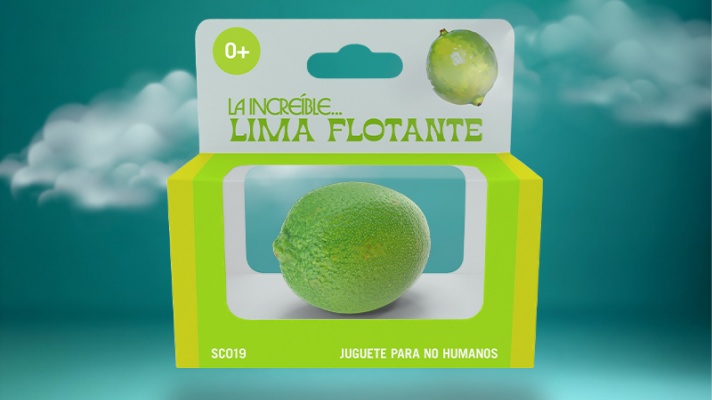Descripción de la Exposición
Vento [Wind]
A group exhibition part of the 34th Bienal de São Paulo – Though it's dark, still I sing
14 November – 13 December 2020
Ciccillo Matarazzo Pavilion (Bienal Pavilion), Ibirapuera Park, São Paulo, Brazil
Performance of Paulo Nazareth [A] LA FLEUR DE LA PEAU
13 November 2020
Online only at 6pm São Paulo time (GMT-3) / 5pm New York and Mexico City (ET) / 10pm Central European time (CET)
As cultural venues in the city of São Paulo start to reopen, the Fundação Bienal presents the show Vento [Wind], from 14 November to 13 December 2020, at the Ciccillo Matarazzo Pavilion as part of the program of the 34th Bienal de São Paulo – Though it’s dark, still I sing. Timed with the exhibition opening, on 13 November at 6pm [São Paulo time (GMT-3)], a performance by artist Paulo Nazareth will be held inside the Pavilion whilst the building remains closed to the public. The performance will be livestreamed on the Bienal Instagram. While holding this exhibition, the Fundação Bienal is rigorously following health and safety protocols established for the local cultural sector. Access to the show will be free and open to all but advance booking will be strictly required.
Departing from concepts such as that of “relations”, the 34th Bienal adopted an innovative format by expanding itself in space – through partnerships with local and international cultural institutions – and in time – through the shows and actions held in the lead up to the central show, since February 2020. Even though the calendar of solo shows had been interrupted due to the Covid-19 pandemic, and the dynamics of the partner institutions network had been reprogrammed considering the exhibition calendar of each one of these venues, the guiding principles of this edition remain precise.
The newly conceived exhibition Vento points to an adjustment on the initially planned route – neither an interruption nor a complete new movement. While responding to the changes experienced by society as a whole, this adjustment is in tune with a curatorial project that, from the very beginning, proposed to be constantly open to public reflection, and, therefore, to be conceived as an open rehearsal.
Vento [Wind] features 21 artists. The 10 newly announced participants are: Alice Shintani (1971, São Paulo, Brazil), Ana Adamović (1974, Belgrade, Serbia), Eleonore Koch (1926-2018, Berlin, Germany), Gala Porras-Kim (1984, Bogotá, Colombia), Jacqueline Nova (1935-1975, Ghent, Belgium), Koki Tanaka (1975, Kyoto, Japan), Luisa Cunha (1949, Lisbon, Portugal), Melvin Moti (1977, Rotterdam, Netherlands), Musa Michelle Mattiuzzi (1983, São Paulo, Brazil) and Paulo Nazareth (multiple dates, Watu Nak, Vale do Rio Doce, Brazil).
The 11 participants of Vento already previously announced as participants of the 34th Bienal are: Antonio Dias (1944, Campina Grande, Brazil), Clara Ianni (1987, São Paulo, Brazil), Deana Lawson (1979, New York, USA), Edurne Rubio (1974, Burgos, Spain), Jaider Esbell (1979, Normandia, Brazil), Joan Jonas (1936, New York, USA), León Ferrari (1920-2013, Buenos Aires, Argentina), Neo Muyanga (1979, Johannesburg, South Africa), Regina Silveira (1939, Porto Alegre, Brazil), Ximena Garrido-Lecca (1980, Lima, Peru) and Yuko Mohri (1980, Kanagawa, Japan). Concurrently with Vento, works by Antonio Dias and Joan Jonas can also be seen at MAM SP and Estação Pinacoteca, respectively, in solo shows that integrate the institutional partnerships of the 34th Bienal.
Alongside the opening of new exhibition Vento, six other new participants are also announced as part of the 34th Bienal digital programming to develop over the course of the following months: Jaune Quick-to-see (1940, Montana, USA), Lydia Ourahmane (1992, Saïda, Algeria), Naomi Rincon Gallardo (1979, North Carolina, USA), Sebastián Calfuqueo Aliste (1991, Santiago, Chile), Sung Tieu (1987, Vietnam) and Uýra Sodoma (1991, Santarém, Brazil). The 34th Bienal de São Paulo online program, substantially extended since the decision to postpone the larger group show until 2021, includes an array of supplements to the show. Examples of these supplements are: live streamed events, virtual studio visits and exhibition tours from different Bienal partner institutions, curatorial correspondences, and a six part series during which the curators of the 34th Bienal de São Paulo and the exhibition’s participants discuss the themes of the show. Access the complete online program in PDF format here.
About Vento [Wind]
The exhibition, which inaugurates the dynamics of organizing the works around statements – select historical elements with dense stories that suggest multifaceted readings –, is titled after Joan Jonas’ film Wind (1968). In the film, the US artist recorded the efforts of a group of performers to execute a choreography on the beach of Long Island, New York, on one of the coldest days of 1968. According to Jacopo Crivelli Visconti, chief curator of the 34th Bienal, “the film not only portrays the performance, it portrays the wind: the role of the dancers, in this sense, is to make the wind visible. Sometimes it is necessary to put something into the void so that it reveals itself full of things we cannot touch or see. We had already decided to exhibit this work in the larger group show of the 34th Bienal (and the visitors will be able to re-encounter this piece next year), but now, in the context we are living in, it has gained new layers of possible reading and interpretation”.
One of the most remarkable aspects of this exhibition is its installation: unlike the usual, no exhibition walls will be built for this show, and the architecture of the Ciccillo Matarazzo Pavilion will remain in its original state, welcoming the artworks directly, without elements to create a mediation between the human scale of the works and the monumental dimensions of the pavilion. By including mostly immaterial works (in audio or video), the exhibition seeks to emphasize a sense of space and distance that can rarely be experienced by the public at exhibitions and events usually held at the building.
This format creates a dialogue with the present moment both because is has been conceived as a way to comply with social distancing regulations and because of its conceptual motivations: “the distance between the works invites the public to look not only at the artworks, but also at the space between them, and to read in this gesture a poetic resonance of the need to distance oneself from others and from the world. At the same time, to trust that few works will fill such a large space is to invest in the capacity of art to reverberate infinitely, making it an irreplaceable tool to face and overcome dark moments such as those we live”, explains Crivelli Visconti.
The inaugural performance
The relationship between what is seen and unseen, the material and the immaterial is also featured in the performance by Paulo Nazareth [A] LA FLEUR DE LA PEAU (2020), never before presented in Brazil. Underlining the exhibition opening, yet without generating agglomeration, the performance will be held on Friday 13 November, at 6pm (GMT-3), inside the Bienal Pavilion whilst the building remains closed to the public. The performance is aimed at online audiences, and will be livestreamed via the Fundação Bienal Instagram page. In the work, non-white people punch a bag of wheat flour hung from the ceiling and use a broom to rearrange the white powder on to the floor, shaping it into a defined circle. In so doing, the performance problematizes, in a symbolic way, colonial relations of power, both by the gestures and bodies on stage as well as by alluding to the various meanings and uses attributed to the circle (and geometry) by different Western and Eastern systems of knowledge. From the following day onwards, visitors will be able to see, in the space, the remains of the performers’ action, which will also be then transformed throughout the exhibition period and through the action of the draughts that flow inside the building.
The statements
The fact that Vento unlocks the dynamics of organization of the artworks around the concept of statements is a key milestone in the wider programme of the 34th Bienal. The statements are select historical elements, elected by the curatorial team, with dense stories that suggest multifaceted readings. The dynamic of organising the exhibition around such statements will be expanded in the larger group show in September 2021. In Wind, the curators resort to two statements to create resonance: the Sino de Ouro Preto [The Bell of Ouro Preto] and the Tikmũ’ũn chants.
Represented in the exhibition by a newly commissioned video, the Bell of Ouro Preto, cast in Germany in 1750, is placed in the the bell tower of the chapel Nossa Senhora do Rosário dos Homens Brancos, known as Capela do Padre Faria, in Ouro Preto (MG), Brazil. This bell was the only one to toll on April 21st, 1792, the day of the execution of Tiradentes, main leader of the Inconfidência Mineira, a Brazilian Independence movement against the Portuguese colonial rule. Such action had openly gone against an official order which prohibited any tribute to the appointed enemy of the Portuguese Crown. With the following independence of Brazil and the proclamation of the Republic, the martyr Tiradentes was declared a national hero, and the bell that honoured him became a symbol of the fight for independence, to such an extent that, on another April 21st, it was taken to the country’s new capital, Brasília, where it was hoisted next to the cross that had been used in the very first mass celebrated in Brazil, and rung on the occasion of the inauguration of the new capital. In the exhibition Wind, works created in different times and places will be grouped around the image of the bell, and occasionally bathed in its sound, alluding to the return, either as a tragedy or as a farce, of dark moments, and the need to oppose them with ideas, bodies and chants – be they literal or symbolic.
In its first appearance as part of the 34th Bienal, recordings of some Tikmũ’ũn ritual chants will be incorporated into the exhibition to serve as a poetic counterpoint and symbolic catalyst for a set of works that have among their triggers a reflection on memory. The Tikmũ’ũn, or Maxakali, are an Indigenous people from a region between the current Brazilian states of Minas Gerais, Bahia and Espírito Santo. After numerous episodes of violence and abuse, recurrent since colonial times, the Tikmũ’ũn population was close to being exterminated in the 1940s. Forced to abandon their ancestral lands to survive, they are today divided in aldeias [Indigenous villages] settled along the Vale do Mucuri [Mucuri Valley], in Minas Gerais. The Tikmũ’ũn chants organize life in the villages, involving their rich cosmology – constituting virtually an index of all the elements that are present in their lives, such as plants, animals, places and objects. Most of these chants are performed collectively, and are often intended for healing. Among the Tikmũ’ũn, the act of singing becomes an integral part of life, as it is through the chanting that they preserve their memories and the community is formed.

Exposición. 14 nov de 2020 - 12 dic de 2020 / Pavilhão Ciccillo Matarazzo - Pabellón Ciccillo Matarazzo / São Paulo, Sao Paulo, Brasil

Exposición. 14 nov de 2020 - 12 dic de 2020 / Pavilhão Ciccillo Matarazzo - Pabellón Ciccillo Matarazzo / São Paulo, Sao Paulo, Brasil

Exposición. 16 abr de 2025 - 11 may de 2025 / Centro Botín / Santander, Cantabria, España

Formación. 08 may de 2025 - 17 may de 2025 / Museo Nacional Centro de Arte Reina Sofía (MNCARS) / Madrid, España